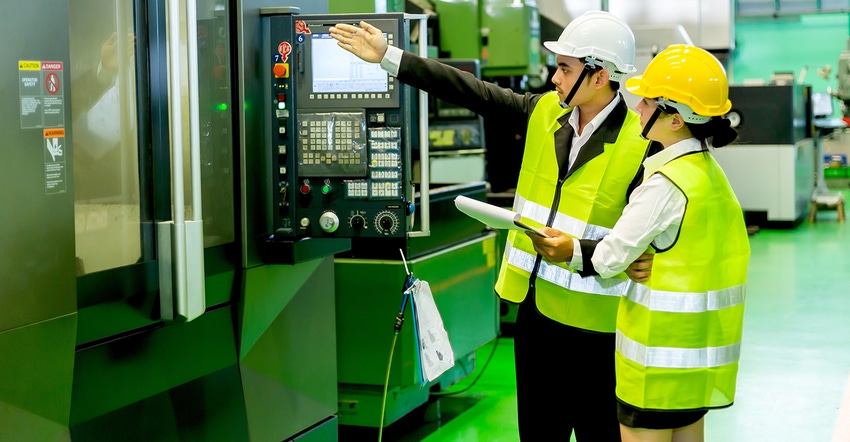Automotive OEMs typically demand mold design innovations from suppliers that improve their bottom line, but will then want to take the mold and its unique features to other mold shops for a competing quote.
January 4, 2021

The year 2020 gave the automotive industry a glimpse into what can happen when a supply chain stretches around the globe and a pandemic puts a crimp in labor. Suppliers to the industry are gearing up for a more positive 2021, according to the Original Equipment Suppliers Association (OESA) "Supplier Barometer for Q4 2020." In particular, it noted that "continued strength in light-vehicle production volumes bolstered suppliers’ 12-month industry outlook vs. three months earlier.”
The Q4 Barometer, sponsored by RSM US LLP, focused on Capital Markets and Innovation. While issues related to the COVID-19 pandemic remain the greatest threat to the industry, the threat rating continued to ease from the second quarter, according to the survey. That said, production volumes are expected to be slightly above the volumes needed to break even.
“Suppliers, on net, will require more capital for product innovation, as the industry continues to offer its customers the latest technologies that end users are demanding,” said the OESA. “A majority of suppliers are confident with their pace of innovation — 73% of respondents indicate they are at least on pace with the industry, while 44% believe they are ahead of the industry.”
The Q4 survey showed that firms across all revenue categories are funding their capital needs primarily through free cash flows. Firms with greater than $500 million in revenue have the heaviest cash flow position in the weighted average cost of capital in comparison with smaller firms. Eighty percent of suppliers responding to the OESA survey said they prefer to purchase new, rather than used, equipment.
A recent article by Laura Putre in IndustryWeek, “Back to the Future: 7 Developments Shaping Automotive in 2021 and Beyond,” noted a shift taking place in component sourcing, with many OEMs choosing to “reduce their reliance on China.” OEMs are looking for greater transparency in their suppliers with regard to labor, capital equipment, and engineering capabilities, as well as their financial stability.
“The pandemic . . . schooled automakers in the lessons of working closely with their suppliers all the way down the chain, doing some digging beyond Tier 1s to the smaller shops, as troubles with labor, materials, or cash flow could shut down an automotive production line half a world away,” writes Putre.
Who should bear the cost of innovation?
As for innovation, mold and molding suppliers have long been pressured by automotive OEMs to reduce costs through mold, materials, and processing innovations. One supplier cited in the OESA Barometer hit the nail on the head when asked to comment on “successes and/or failures” working with OEMs on innovations. “Many OEMs, despite calls for innovation, are reluctant to be the first to market, wanting others to work out the kinks for them. Furthermore, developing with OEMs is tough, as they insist on retaining rights to obtain quotes from other companies not part of the development who don’t have the development overhead,” said the respondent.
That’s long been a problem for mold manufacturers dealing with automotive OEMs that demand innovation in mold design to reduce part costs through cycle times. Mold manufacturers develop a design with some unique features, but OEMs want to believe the design belongs to them — not the mold manufacturer — and want the right to take the design to other mold shops for a quote. The mold maker then risks losing out on getting paid for the design development time if the OEM contracts with another shop.
Another supplier responding to the survey echoed that sentiment. “More system-related innovations require OEM input and sometimes these ideas are shared with our competitors,” the supplier noted. That’s why many mold-making companies are reluctant to divulge their innovative designs.
If automotive OEMs want their Tier 1 mold/molding suppliers to work with them to design and develop innovations, the OEMs need to play fair and not share these innovations with competitors when trying to get a better quote. Additionally, if the OEM wants to “own” the innovations developed by the mold makers, the OEM needs to pay for the innovation separately from the cost of the mold. However, many automotive OEMs won’t pay for R&D innovation as a separate line item in the quote.
“Even as suppliers align costs and capital expenditures to a new market reality, leading firms recognize the importance of innovation in offsetting the impact of lost production volume,” said Mike Jackson, Executive Director, Strategy and Research, OESA. “Nearly 85% of supplier responses affirmed that their company’s capital structure supports innovation objectives, which increasingly fosters collaboration with external partners including suppliers, material producers, and customers. Given the dynamic nature of the global automotive industry, suppliers are shrewd to utilize a range of innovation strategies and adapt approaches to suit specific customers and technologies.”
About the Author(s)
You May Also Like



